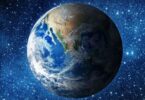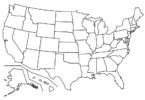Questions about the Universe:
Orion is the name of a:
(a) star
(b) planet
(c) galaxy
(d) constellation
What is the name of the robotic vehicle used by NASA to explore the surface of Mars, conducting scientific experiments and sending back valuable data?
(a) Curiosity Rover
(b) Opportunity Rover
(c) Voyager Probe
(d) Hubble Telescope
A study of binary stars is most helpful in
(a) Finding their distances
(b) Finding their temperature
(c) Finding their masses
(d) Verifying Newton’s force law of gravitation
Which of these men have not walked on the moon?
(a) Neil Armstrong
(b) Alan Shepard
(c) Michael Collins
(d) Buzz Aldrin
Planets do not twinkle because
(a) they emit light of a constant intensity
(b) their distance from the Earth does not change with time.
(c) they are very far away from the Earth, resulting in a decrease in the intensity of light
(d) They are nearer to Earth; hence, we receive a more significant amount of light, so minor variations in the intensity are not noticeable.
What is the approximate time it takes for a spacecraft to travel from Earth to Mars during a favorable alignment of the planets?
(a) 1 week
(b) 1 month
(c) 6 months
(d) 1 year
The planet with the maximum number of natural satellites (moons) so far discovered is
(a) Jupiter
(b) Neptune
(c) Saturn
(d) Uranus
A group of bright and faint stars is called
(a) Galaxy
(b) Comet
(c) Black hole
(d) Constellation
Which planet is the Mission JUNO by NASA related to?
(a) Mars
(b) Jupiter
(c) Saturn
(d) Venus
According to modern astronomers into how many constellations, the whole sky is divided
(a) 10
(b) 88
(c) 880
(d) 5000
The Hubble Space Telescope is a large telescope in space. It is launched by
(a) NASA
(b) ISRO
(c) JAXA
(d) CNSA
Related: science instruments pictures
Which of the following theories is the most satisfactory about the origin of the universe?
(a) Big Bang Theory
(b) Pulsating theory
(c) Steady-state theory
(d) None of these
Which planet in our solar system has the largest moon, Ganymede, which is even larger than the planet Mercury?
(a) Mars
(b) Saturn
(c) Jupiter
(d) Uranus
The planets, called the inner planets, are
(a) Jupiter, Saturn, Uranus, Neptune
(b) Mars, Jupiter, Saturn, Uranus
(c) Saturn, Uranus, Neptune, Pluto
(d) Mercury, Venus, Earth, Mars
Hubble showed that the universe as a whole is expanding, and the distant stars are receding from us. When compared with the corresponding line from a source, the spectral line from a star will then show.
(a) A shift in frequency towards the red end
(b) A shift in frequency towards the violet end
(c) No shift in frequency at all
(d) A shift in frequency towards the violet end as well as a decrease in intensity
What is an astronomical event that occurs when one celestial object moves into the shadow of another?
(a) Epilepsy
(b) Ellipse
(c) Eccles
(d) Eclipse
A star that appears blue will be
(a) As hot as the Sun
(b) Cooler than the Sun
(c) Very cold indeed
(d) Much hotter than the Sun
Related: Dice reasoning questions
__ was the first Kuiper belt object to be discovered
(a) Charon
(b) Pluto
(c) Ceres
(d) Haumea
CO2 gas is found in which of the following pairs of the planet
(a) Earth and Mercury
(b) Mercury and Saturn
(c) Venus and Saturn
(d) Venus and Mars
Stars appear motionless because:
(a) they move with the same speed as that of the Earth
(b) they do not move at all
(c) they are very far away from the Earth
(d) their speed is extremely slow
Which is the correct order of the spatial character of the universe from smallest to largest?
(a) Milky Way, Universe, Local Group, Local Supercluster
(b) Universe, Milky Way, Local supercluster, Local Group
(c) Milky Way, Local Group, Local Supercluster, Universe
(d) Local Group, Milky Way, Universe, Local Supercluster
What is the speed of light, often used as a cosmic speed limit, approximately equal to?
(a) 300,000 kilometers per second
(b) 1 million kilometers per second
(c) 150,000 kilometers per hour
(d) 3 million kilometers per hour
A black hole is a
(a) Hole in the ozone layer of the atmosphere
(b) Hole in Earth’s center
(c) Highly dense matter available in the atmosphere
(d) Hole in the troposphere
Related: US presidents in chronological order
What is the popular name for Sirius, nine light-years from Earth?
(a) The Dog Star
(b) Rigel
(c) Betelgeuse
(d) Eight Mile
The age of the universe is believed to be
(a) 1 billion years
(b) 10 billion years
(c) 10-20 billion years
(d) 1000 billion years
Which of the following has a highly elongated elliptical orbit?
(a) Asteroid
(b) Meteor
(c) Comet
(d) Meteorite
What is the primary purpose of the International Space Station (ISS)?
(a) Space tourism
(b) Lunar exploration
(c) Asteroid mining
(d) Scientific research and international collaboration
What was the Giotto spacecraft sent to investigate in 1985?
(a) Saturn’s rings
(b) Halley’s comet
(c) The Asteroid Belt
(d) The atmosphere of Uranus
Stars are mainly made up of:
(a) oxygen and hydrogen
(b) oxygen and nitrogen
(c) hydrogen and helium
(d) water and helium
Related: Basic biology questions
Light Year is used to measure
(a) Intensity of light
(b) Mass
(c) Time
(d) Astronomical distance
The black hole theory was discovered by
(a) S. Chandrasekhar
(b) Har Gobind Khorana
(c) C.V. Raman
(d) S. Ramanujan
Which of the following is/are by the scientists as evidence for the continued expansion of the universe?
- Detection of microwave space
- Observation of redshift phenomenon in space
- Movement of asteroids in
- Occurrence of sup explosions in space
Select the correct answer using the codes given below:
(a) 1 and 2
(b) Two only
(c) 1, 3 and 4
What is the name of Boeing’s crewed space vehicle designed to transport astronauts to and from the ISS?
(a) Falcon 9
(b) Crew Dragon
(c) Starship
(d) CST-100 Starliner
Asteroids are
(a) Small planets
(b) Shooting stars
(c) Found in a belt between Earth and Venus
Which is the nearest star to Earth?
(a) Pole star
(b) Sun
(c) Dogstar
(d) Sirius
Related: Gravitation Online Question Bank
Venus appears brighter than other stars because
(a) It is heavier than other planets
(b) Its density is more than other planets
(c) It is nearer to Earth in comparison to other planets
(d) Nuclear fusion takes place at its surface
Which of the following planets rotates clockwise?
(a) Pluto
(b) Jupiter
(c) Venus
(d) Mercury
The light coming from stars gives the idea of their
(a) Size
(b) Rotational Speed
(c) Mass
(d) Temperature
Which of the following is a major feature of Boeing’s CST-100 Starliner spacecraft that allows it to be reused for multiple missions?
(a) Parachute landing
(b) Water landing
(c) Vertical takeoff and landing (VTOL)
(d) Touchdown on a landing platform
Titan is the largest natural satellite of planet
(a) Mercury
(b) Venus
(c) Saturn
(d) Neptune
Related: questions on microscope
Galaxies are usually classified based on their:
(a) mass
(b) size
(c) shape
The heliocentric theory of the universe is put forward by
(a) Copernicus
(b) The Pope
(c) William Harvey
(d) Vesalius
Milky way is
(a) A planet in our system
(b) A sun
(c) One of the solar system
(d) One of the enormous galaxies of the universe
To an astronaut, the outer space appears
(a) White
(b) Deep blue
(c) Black
(d) Greem
Related: list of branches of Science
Which planets have been named after the Roman goddess of love?
(a) Mars
(b) Jupiter
(c) Saturn
(d) Venus
The ozone hole that has been detected lies in the atmosphere above—
(a) Arctic Ocean
(b) Antarctica
(c) India
(d) Alaska
Which one of the following is known as ‘Morning Star’?
(a) Earth
(b) Venus
(c) Mars
(d) Saturn
Related: Binomial expansion questions
Ozone consists of—
(a) Oxygen only
(b) Oxygen and Nitrogen
(c) Hydrogen and Carbon
(d) Oxygen and Carbon
Halley’s comet appears once in
(a) 24 years
(b) 32 years
(c) 76 years
(d) 84 years
Where is the United Kingdom’s National Space Centre?
(a) Bristol
(b) Runnymede
(c) Cardiff
(d) Leicester
Asteroids have their orbits between the planets.
(a) Mercury and Venus
(b) Earth and Mars
(c) Mars and Jupiter
(d) Jupiter and Saturn
Related: questions on the Sun
Which of the following is the terrestrial planet?
(a) Mercury
(b) Venus
(c) Mars
(d) All of these
Ceres is:
(a) satellite of the mars
(b) satellite of the Jupiter
(c) an asteroid
(d) a meteorite
What is the other name of Pole Star?
(a) South Star
(b) West Star
(c) East Star
(d) North Star
The Milky Way galaxy has:
(a) elliptical shape
(b) spiral shape
(c) irregular shape
(d) None of these
Related: water pollution quiz questions
The vast collection of billions of stars is called a:
(a) universe
(b) galaxy
(c) constellation
The Sun, the moon, and all those objects shining in the night sky are called as
(a) Star
(b) Satellite
(c) Celestial Bodies
(d) Milky Way
‘Super nova’ is
(a) a comet
(b) an asteroid
(c) an exploding Star
(d) a black hole
Galaxies:
(a) move towards each other
(b) move away from each other
(c) do not move at all
(d) one of these
Related: questions about the Internet
Any heavenly body having light of its own is called a:
(a) meteorite
(b) nebulae
(c) star
(d) comet
When the/Earth reaches the point of perihelion, then
(a) It is nearest to the moon
(b) It is nearest to the moon and the Sun both
(c) It is farthest from the Sun
(d) it is nearest to the Sun








Ozone is called o3 so it obviously have oxygen only